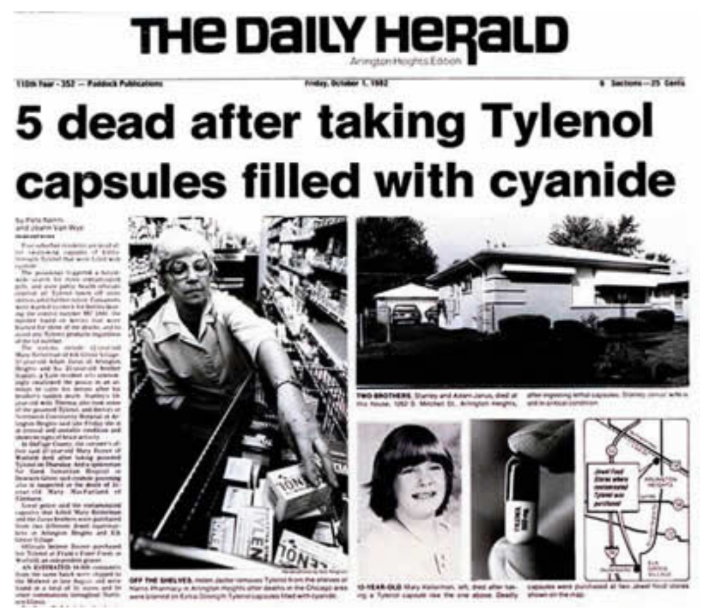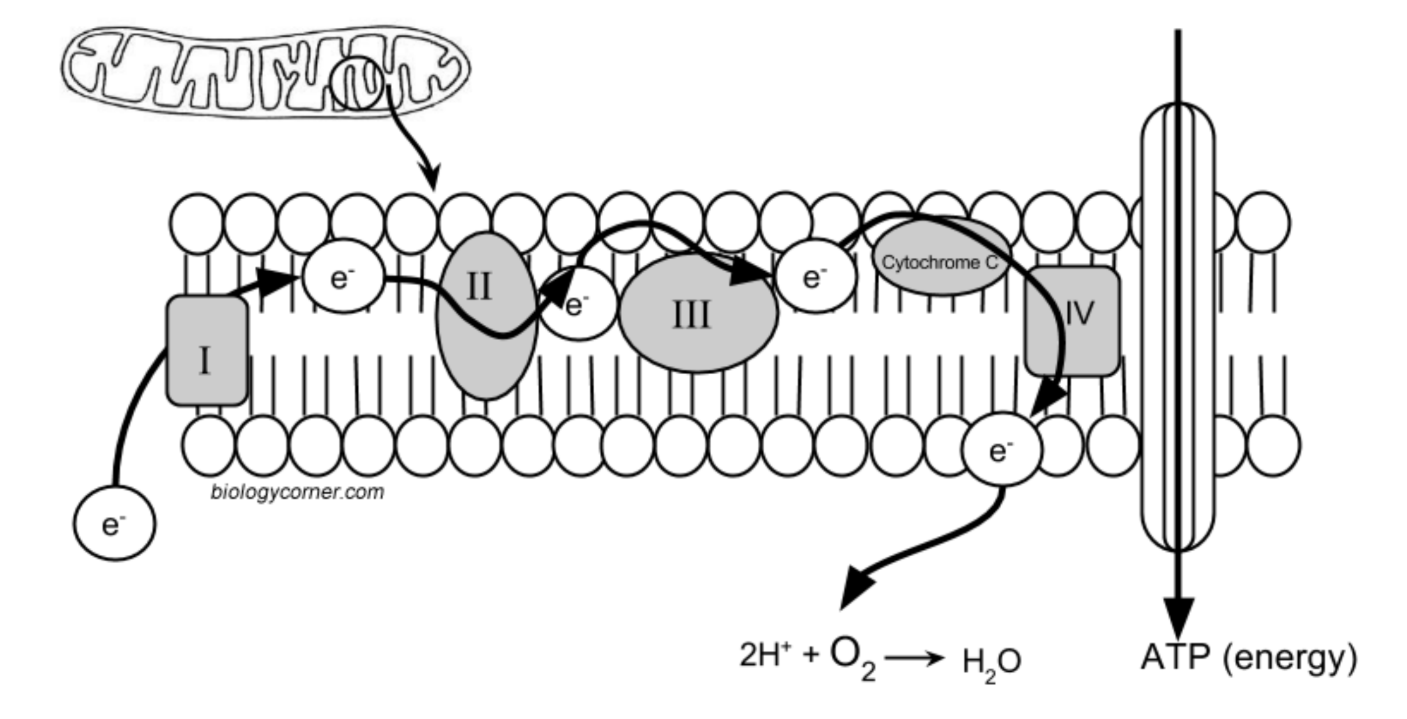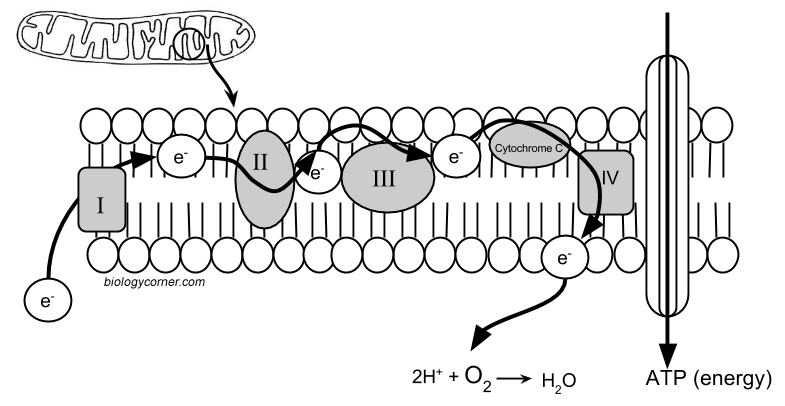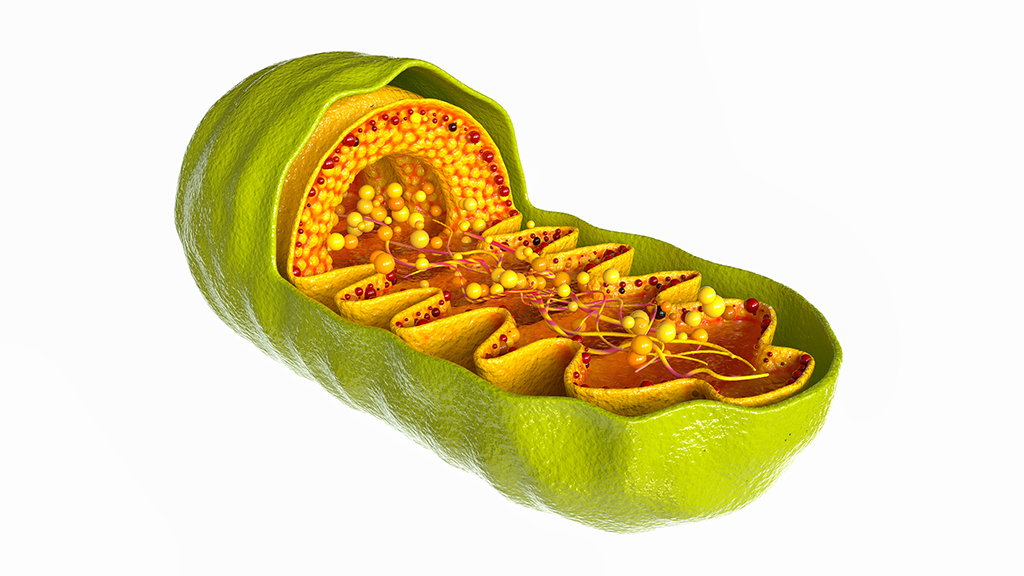
- school Campus Bookshelves
- menu_book Bookshelves
- perm_media Learning Objects
- login Login
- how_to_reg Request Instructor Account
- hub Instructor Commons
- Download Page (PDF)
- Download Full Book (PDF)
- Periodic Table
- Physics Constants
- Scientific Calculator
- Reference & Cite
- Tools expand_more
- Readability
selected template will load here
This action is not available.


Case Study: Chicago Cyanide Murders
- Last updated
- Save as PDF
- Page ID 26461
This page is a draft and is under active development.
A Case Study in Cellular Respiration
Part 1: background.
In September of 1982 ,Mary Kellerman gave her 12 year old daughter a painkiller when she awoke during the night complaining of a sore throat. At 7 am the next morning, her daughter was found collapsed on the bathroom floor, and later pronounced dead. Adam Janus, a postal worker in another Chicago suburb also died unexpectedly, though originally it was thought he had suffered from a heart attack. While his family gathered to mourn their loss, his brother and sister became ill and later died. In the days that followed, three more unexplained deaths occurred in nearby Chicago suburbs. Investigators found that all of the victims had taken an extra strength tylenol hours before their death. They suspected that someone had tampered with the medication.

Symptoms exhibited by each of the victims included:
- weakness, dizziness, sleepiness
- flushed, bright red, skin tone
- shortness of breath and rapid breathing
- confusion and disorientation
1. In your opinion, are the seven deaths connected? What additional information would you need to determine if they are connected?
2. If poison is suspected in the deaths, how would you proceed with the investigation?
Part 2: Autopsy report
The medical examiner concluded that each of the victims had died of hypoxia. Hypoxia means that the person suffered from a lack of oxygen, or they were suffocated. The reason for the hypoxia is not always clear at the first examination.
The medical examiner also showed the tissue samples from the heart, lungs, and liver showed massive cell death. On further investigation, it was shown that the tissues had major mitochondrial damage.
Even though the victims died of hypoxia, their level of oxygen in their blood was approximately 110 mm Hg. The normal range is 75100 mm Hg. 3. Recall your knowledge of the function of organelles. What function of the cells was interrupted in these patients?
4. While poison is the main suspect in the case, what are other ways a person could die of hypoxia?
5. Analyze the oxygen levels of the victims. Were the levels higher or lower than normal? How can you reconcile this observation with the cause of death being hypoxia?
Toxicology reports show that the victims had been poisoned with cyanide. The poison was traced back to extra strength tylenol where the murderer had opened the capsules and replaced acetaminophen (a pain killer) with cyanide. Cyanide acts very quickly, often killing within minutes of ingestion and authorities were slow to identify the cause of the deaths. Once the cause as identified, stores removed tylenol and other drugs from shelves. While there were many suspects, no one was ever charged with the crime and it is still an ongoing investigation. Since the Chicago Tylenol murders, drug companies have drastically changed how medicines are packaged.
Why is cyanide such an effective poison? You might be surprised to learn that it directly interferes with cellular respiration that occurs in the mitochondria.
7. Recall that the mitochondrion is sometimes called the "powerhouse" of the cell. What does this mean? Why is the mitochondrion important?
Part 3: Why Do We Need Oxygen?
It seems like a simple question, everyone knows you need to breathe to live. Have you ever thought about why oxygen is so important? The victims of the cyanide poisoning all had high levels of oxygen in their blood, but the poison was interfering with how the cells use that oxygen. To understand, we need to take a very close look at the structure of the mitochondrion.

Inside the mitochondrion, there are several layers of membranes. In fact, these membranes resemble the membrane that surrounds the cell. It has a bilayer of phospholipids and embedded proteins. On the diagram above, the proteins are labeled I, II, III, IV, and Cytochrome C.
The proteins in the membrane pass electrons from one to the other, this is known as the electron transport chain. The passing of these electrons allows ATP (adenosine triphosphate) to be generated. At the end of the electron transport chain, Cytochrome C passes the electron to its final acceptor, oxygen. Oxygen then binds with proteins to create water. This process is continuous in cells, with ATP constantly being generated and oxygen being used as the final electron acceptor.
Cyanide inhibits cytochrome C, preventing the last protein from doing its job. The electron stops at the end of the chain and cannot be passed to oxygen. The whole chain grinds to a halt and no ATP can be made.
8. On the model of mitchondrion, highlight the area that is the ELECTRON TRANSPORT CHAIN. Place an X over the protein that is inhibited by cyanide. What is the relationship between the ETC and oxygen?
9. Cyanide is an extremely fast acting poison. In fact, it was developed as a suicide pill (called Lpill) during World War II so that British and American spies could avoid being captured alive. Given what you know about ATP and cellular respiration, explain why cyanide is so fast acting.
10. Given what you know about cyanide poisoning, do you think that giving a person oxygen would be an effective treatment? Why or why not?

The Biology Corner
Biology Teaching Resources

Case Study – Chicago Cyanide Murders
This case focuses on a real event that happened in 1982 where several people were poisoned by taking Tylenol that had been laced with cyanide. Students investigate how cyanide interferes with the mitochondria’s ability to create cellular energy.
The worksheet includes a detailed model of the mitochondrion showing the electron transport chain and how cyanide interferes with the last protein in the chain, cytochrome c. The activity also provides students with an answer to the question of why we need oxygen and oxygen’s important role in cellular respiration.

Teachers can print the document and/or use a Slide presentation to create a more instructor-led activity. The activity was designed for AP Biology students but can be used with basic biology if the instructor provides additional guidance.
Grade Level: 9-12 | Time Required 1 hr
HS-LS1-7 Use a model to illustrate that cellular respiration is a chemical process whereby the bonds of food molecules and oxygen molecules are broken and the bonds in new compounds are formed resulting in a net transfer of energy.
Shannan Muskopf
- Publications
- Conferences & Events
- Professional Learning
- Science Standards
- Awards & Competitions
- Daily Do Lesson Plans
- Free Resources
- American Rescue Plan
- For Preservice Teachers
- NCCSTS Case Collection
- Partner Jobs in Education
- Interactive eBooks+
- Digital Catalog
- Regional Product Representatives
- e-Newsletters
- Bestselling Books
- Latest Books
- Popular Book Series
- Prospective Authors
- Web Seminars
- Exhibits & Sponsorship
- Conference Reviewers
- National Conference • Denver 24
- Leaders Institute 2024
- National Conference • New Orleans 24
- Submit a Proposal
- Latest Resources
- Professional Learning Units & Courses
- For Districts
- Online Course Providers
- Schools & Districts
- College Professors & Students
- The Standards
- Teachers and Admin
- eCYBERMISSION
- Toshiba/NSTA ExploraVision
- Junior Science & Humanities Symposium
- Teaching Awards
- Climate Change
- Earth & Space Science
- New Science Teachers
- Early Childhood
- Middle School
- High School
- Postsecondary
- Informal Education
- Journal Articles
- Lesson Plans
- e-newsletters
- Science & Children
- Science Scope
- The Science Teacher
- Journal of College Sci. Teaching
- Connected Science Learning
- NSTA Reports
- Next-Gen Navigator
- Science Update
- Teacher Tip Tuesday
- Trans. Sci. Learning

MyNSTA Community
- My Collections
Mitochondrial Mysteries
The Origin of Organelles and Cellular Respiration
By Anna K.S. Jozwick, Megan M. Lee
Share Start a Discussion

This interrupted case study follows two college freshmen as they learn about the origin and functioning of mitochondria within our cells. The case is divided into two modules that can be taught separately or together. The first considers the origin of mitochondria and chloroplasts by examining the endosymbiotic theory, according to which ancient bacteria were initially engulfed by a larger cell and subsequently developed an association that became more obligate throughout evolutionary history. Students critically examine evidence to support this theory by comparing characteristics of each organelle to those of prokaryotes. The second module summarizes the process of cellular respiration by describing where in the cell or within the mitochondria each step occurs, the inputs and outputs, and the importance of creating and utilizing a proton gradient for ATP production. This case study was developed for a first-semester introductory biology course, but could be modified for a high school AP biology course or 200-level undergraduate course focused on cell biology.
Download Case
Date Posted
- Provide evidence to support the endosymbiotic theory explaining the acquisition of mitochondria and chloroplasts by eukaryotic cells.
- Write and revise testable hypotheses.
- Summarize the structure and function of the mitochondria in the eukaryotic cell.
- Describe the outputs and location of each step of cellular respiration within the eukaryotic cell or mitochondria.
- Explain the role of electron carriers, oxygen, protons, and protein complexes in the process of cellular respiration.
Endosymbiosis; mitochondria; mitochondrial DNA; cellular respiration; evolution; energy; ATP; organelle; Kearns-Sayre syndrome; eukaryote; prokaryote; electron carrier; chloroplast
Subject Headings
EDUCATIONAL LEVEL
High school, Undergraduate lower division
TOPICAL AREAS
TYPE/METHODS
Teaching Notes & Answer Key
Teaching notes.
Case teaching notes are protected and access to them is limited to paid subscribed instructors. To become a paid subscriber, purchase a subscription here .
Teaching notes are intended to help teachers select and adopt a case. They typically include a summary of the case, teaching objectives, information about the intended audience, details about how the case may be taught, and a list of references and resources.
Download Notes
Answer Keys are protected and access to them is limited to paid subscribed instructors. To become a paid subscriber, purchase a subscription here .
Download Answer Key
Materials & Media
Supplemental materials.
As explained in the teaching notes, the PowerPoint presentation below is used to guide the case in class. Additionally, an alternative version of the case consisting of the second module only is provided.
- PPT Slide Deck (~3 MB)
- Alt. Version: Cellular Respiration Only
- How We Think Complex Cells Evolved This video provides a basic explanation of the theory of endosymbiosis. It details the origins of mitochondria and chloroplasts. Running time: 5:41 min. Produced by Adam Jacobson, animation by Camilla Gunborg Pedersen, TED-Ed, 2015.
- Cellular Respiration This is a short video describing the four stages of cellular respiration. Running time: 2:47 min. Produced by RicochetScience, 2016.
- Cellular Respiration and the Mighty Mitochondria This video is a detailed description of the process of aerobic cellular respiration that includes ATP structure, cellular organization and protein functions. Running time: 7:48 min. Produced by Amoeba Sisters, 2014.
You may also like
Web Seminar
Join us on Thursday, June 13, 2024, from 7:00 PM to 8:00 PM ET, to learn about the science and technology of firefighting. Wildfires have become an e...
Join us on Thursday, October 10, 2024, from 7:00 to 8:00 PM ET, for a Science Update web seminar presented by NOAA about climate science and marine sa...
Secondary Pre-service Teachers! Join us on Monday, October 21, 2024, from 7:00 to 8:15 PM ET to learn about safety considerations for the science labo...
Elementary Pre-service Teachers! Join us on Monday, October 7, 2024, from 7:00 – 8:15 PM ET to learn about safety considerations for the element...

IMAGES
VIDEO
COMMENTS
Cyanide stops NADH and FAD2 from being used to make NAD+. Given what you know about the action of cyanide in cellular respiration, explain why the patients died of a lack of oxygen while their blood oxygen levels were normal? The cells could not use the blood oxygen for energy. Since the ETC was not functioning the cells died due to a lack of ATP.
Sarah Girard Cellular Respiration Case Study 21 April 2020. PART I: 1. Are there any similarities or connections between these seven individuals? What questions would you want to ask the families to answer these questions? a. All patients share similar symptoms, such as dizziness, confusion, headache, shortness of breath, and vomiting.
The Mystery of the Seven Deaths: A Case Study in Cellular Respiration. By: Nicoletta Manoussakis. Part 1 - The Symptoms a. Are there any similarities or connections between these seven individuals? What questions would you want to ask the families to answer these questions? a. Yes, all seven individuals took Tylenol and have multiple symptoms. b.
AP/DC Biology: GIZMO STEM Investigation: Cellular Respiration. As you work through the steps (IN ORDER) for the case study, take notes, answer questions, and fill in charts as required or needed. Steps of Cellular Respiration: **Questions (Answer as Going through Handbook)
The correct hypothesis should name the electron transport chain (ETC) as the pathway of cellular respiration that is no longer functioning. 3. Explain your reasoning for your hypothesis. When the electron transport chain is correctly functioning, it receives electrons from NADH. These electrons are passed from one electron carrier protein to ...
Chicago Cyanide Murders: A Case Study in Cellular Respiration . Part 1: Background In September of 1982 ,Mary Kellerman gave her 12 year old daughter a painkiller when she awoke during the night complaining of a sore throat. At 7 am the next morning, her daughter was found collapsed on the bathroom floor, and later pronounced dead.
A Case Study in Cellular Respiration. Part 1: Background. In September of 1982 ,Mary Kellerman gave her 12 year old daughter a painkiller when she awoke during the night complaining of a sore throat. At 7 am the next morning, her daughter was found collapsed on the bathroom floor, and later pronounced dead. ...
A Case Study in Cellular Respiration. by. Michaela A. Gazdik Biology Department Ferrum College, Ferrum VA. Part I - The Symptoms. Imagine that you work at the medical examiner's ofi ce for a major metropolitan city. As Chief Medical Ofi cer, you investigate suspicious deaths and provide toxicology services for the county.
This case is based loosely on the real-life 1982 Chicago Tylenol murders in which seven people died from cyanide poisoning, which in-. terrupts the function of the electron. transport chain (ETC). Students. must examine the various compo-. nents of cellular respiration and the. role they play in ATP production in.
In this interrupted case study, students learn about the function of cellular respiration and the electron transport chain and what happens when that function is impaired. The case is loosely based on the real-life 1982 Chicago Tylenol murders where seven people died when Tylenol capsules were laced with cyanide.
Study Tip: Before getting involved with the details of cellular respiration, take a second to look at the big picture as shown in Figure 9.1. Both photosynthesis (the topic for Chapter 10) and cel-lular respiration are key ecological concepts involved with energy flow. Use Figure 9.1 to label the indicated parts in the following figure.
Sample answer: Cellular respiration is the intracellular process by which cells produce energy. Aerobic cellular respiration requires oxygen to "burn" glucose for energy and produces carbon dioxide as a waste product. ... 13.7 Case Study Conclusion and Chapter Summary: Review Questions and Answers. Self-marking; Describe the relationship ...
The general order of the processes is: Glycolysis. Krebs Cycle. Electron Transport Chain. ATP Synthase. Realize that in general, the outputs of one process are the inputs of following processes. Knowing the inputs and outputs of each step is key to understanding cellular respiration! Image Credit: CK-12 Foundation, CC-BY-NC-SA 3.0.
Case Study - Chicago Cyanide Murders. This case focuses on a real event that happened in 1982 where several people were poisoned by taking Tylenol that had been laced with cyanide. Students investigate how cyanide interferes with the mitochondria's ability to create cellular energy. The worksheet includes a detailed model of the ...
Read Part II of the case study. Discuss questions 1 and 2, and record your answers in the space provided. Cellular Respiration was the first thing to stop working. This could be what caused death for these individuals because cellular respiration makes ATP and if you can't make ATP everything else will start to fail.
Biology questions and answers; Chicago Cyanide Murders: A Case Study in Cellular Respiration Part 1: Background Imagine that you work at the medical examiner's office in Chicago. As Chief Medical Officer, you investigate suspicious deaths and provide toxicology services for the county. Unfortunately, it's been a busy week.
Instructor's Answer Key Chapter 5: Cell Respiration and Metabolism Answers to Test Your Understanding of Concepts and Principles 1. The primary advantage of anaerobic respiration is that it serves as a source of new ATP formation at times when there is not an adequate supply of oxygen available to sustain aerobic respiration.
NATIONAL CENTER FOR CASE STUDY TEACHING IN SCIENCE The Mystery of the. Seven Deaths: A Case Study in Cellular Respiration . by. Michaela A. Gazdik Biology Department Ferrum College, Ferrum VA . Part I - The Symptoms . Imagine that you work at the medical examiner's ofce for a major metropolitan city. As Chief Medical Of cer, you
Abstract. This interrupted case study follows two college freshmen as they learn about the origin and functioning of mitochondria within our cells. The case is divided into two modules that can be taught separately or together. The first considers the origin of mitochondria and chloroplasts by examining the endosymbiotic theory, according to ...
They then enter the cell respiration Handbook to learn the science concepts they will need to identify the poison and save the life of the agent. In the Handbook, students learn about chemical energy and that cell respiration occurs in the mitochondria of cells. The inputs and outputs of cell respiration are reviewed, which leads into brief ...
cell membrane into the cytoplasm of the cell? GLUCOSE IS BROKEN DOWN INTO PYRUVIC ACID (2) Cellular Respiration 1 ATP ATP Read This! Glycolysis occurs in the cytoplasm of cells and does not require the presence of oxygen. Therefore, the process is anaerobic. It is the first step used by cells to extract energy from glucose in the form of ATP.
6. The mitochondrion takes care of the important functions of the cell, and they generate most of the chemical energy needed to power the cell's biochemical reactions. 7. Coloring. The relationship between the ETC and oxygen is that the ETC is used to pass electrons to oxygen.